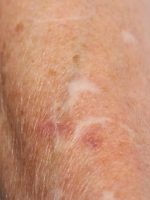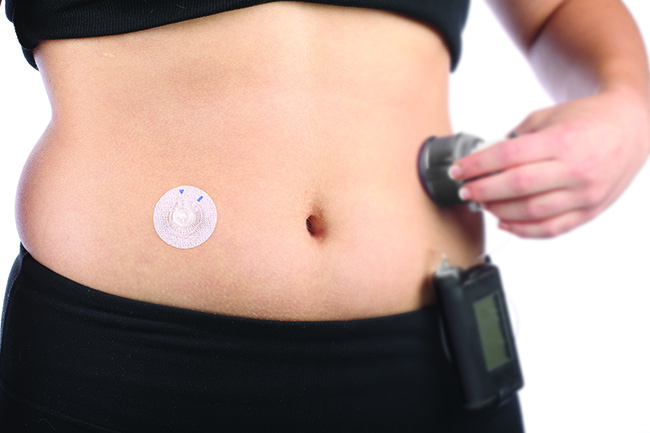One of the most problematic oversimplifications that can happen when designing a wearable medical device is “tape is tape.” It’s a thought that might be passable in everyday life, but when the product you’re designing will eventually be used to make critical health decisions, that mindset could have adverse effects. The reality is that adhesive plays a critical role in the overall success of your device. Its characteristics and the ways it interacts with other device materials directly impacts the device’s functionality and accuracy, regardless of whether the adhesive is adhering device components together or sticking the device to skin.

It’s for this reason that adhesive needs to be thought about sooner rather than later in the device design process. Thinking about it after, for example, once processes have been decided or after the device housing material has been chosen could result in launch delays and added cost.
Treating adhesive selection as a trivial exercise may result in manufacturing issues, device malfunctions and even harm to the user. Let’s walk through three levels of potential outcomes, progressing from bad to worse.
Bad: Manufacturing Issues
You’ve designed the device and it looks, feels and functions how it should. Now it’s time to hit the production floor to replicate what you’ve created for the masses.
For a variety of reasons, adhesives are capable of causing manufacturing complications. Why? Here are two common reasons:
The adhesive is too soft. If too soft of an adhesive is used, it can gum up equipment during production and converting processes, halting a fast-paced assembly line. These sorts of delays can add unforeseen costs to the project.
Incompatible materials and manufacturing speed. Device materials must be able to withstand the speed and friction of the manufacturing process. As an example, the liner, or the support film that’s removed from the adhesive before the adhesive is applied to the intended substrate, can break or fail if its properties aren’t able to withstand the speed of production.
Adhesives may appear to be a small component, but they have the potential to immensely impact the manufacturing schedule and associated costs. Work closely with your supplier, starting early in the process, to help ensure adhesive and backing combinations are optimized to withstand and match the speed and friction during manufacturing.
Worse: Device and Adhesive Fails
Even after a device is successfully manufactured, an incompatible adhesive can rear its ugly head. One of the largest concerns involves an adhesive impacting a device’s accuracy. For stick-to-skin applications, accuracy depends on the device adhering to skin for a certain length of time. An insufficient adhesive will more than likely cause the adhesive to prematurely fall off. When adhesives are adhering device components together, accuracy is dependent on how well the components stick together. Any movement or sheering of parts alters the device’s precision. Using an extended border around the device, or “skirt,” is one way to help keep a device in its desired location, increasing wear time and improving stability. For lab-on-a-chip devices specifically, the wrong adhesive choice can negatively impact the integrity of the bioassay being tested, rendering it useless. Be aware that remnants from manufacturing, finishing or other processes can interact with the assay. This could affect the accuracy of the reading, so be sure to inspect and include a cleaning step in your manufacturing process, as appropriate.
Another concern is device reliability. For instance, flex circuits de-bonding from the printed circuit board can have a particularly detrimental effect. Conductive pressure sensitive adhesives (PSAs) can replace solder connections, in some situations, making a quicker and more efficient conductive connection. Be sure to use the right PSA for the application, however, because the connection can come apart and create an inconsistent or incomplete connection.

Adhesives can also combine with other materials, if they’re incompatible. Plasticizers, which are chemical compounds added to other plastic or rubber device base materials to create softer, more flexible features, is an item to be aware of. The initial bond to these altered materials is typically good, but the adhesion over time can become an issue. As time goes on, the plasticizer can migrate from device base material to adhesive, and just as it does with the plastic or rubber material, the plasticizer softens the adhesive. It’s a particularly frustrating defect because it takes time to develop and isn’t often seen early in the device’s evaluation. If you’re using a plasticizer in your materials, engage a knowledgeable adhesives supplier to help identify more tolerant selections.
Worst: Risk to User and Their Skin
Skin isn’t like any other substrate. It’s a living organ in charge of keeping us safe, healthy and just the right temperature. As one of our body’s best sensors, it can tell when a foreign object—like an adhesive or medical device—is inhibiting its normal function, so we have to be careful with how we treat it and what we adhere to it. For instance, not all adhesives are skin friendly. Some adverse reactions may be seriously damaging while others are more annoying—like an adhesive leaving residue on the user’s skin and picking up dirt or lint. Even though no real damage is done, these annoyances are avoidable and shouldn’t happen.
On the other hand, some outcomes are more serious and can potentially result in harm to the user. Allergic reactions and medical adhesive-related skin injuries (MARSIs) are common adverse effects of applying the wrong adhesive to skin. Allergic reactions can be caused by materials migrating into or onto the skin when an adhesive is incompletely cured or finished, while MARSIs are mostly caused by choosing an adhesive that’s inappropriate for the application. Common types of MARSI can range in severity from skin irritations, like folliculitis (rash-like bumps on the skin’s surface caused by irritated hair follicles) and maceration (whitened layer of skin resulting from trapped moisture), which increase skin’s vulnerability, to more serious outcomes, like tension injuries and blisters (caused by adhesives that’re stretched when applied and then relax, creating excess tension on skin) and skin tears or skin stripping (when the bond between skin and adhesive is stronger than the first two layers of skin, causing them to pull apart during adhesive removal). It’s important to know which adhesives are meant for stick-to-skin applications because they can compromise the integrity of the skin.
The main takeaway here is that once the user experiences pain, they won’t want to use or recommend that device again. And in our interconnected world, reviews can be disseminated quickly by word of click, forcing entire companies to experience and be affected by the backlash.
While a lot can go wrong when an adhesive is inappropriately selected, mistakes are largely preventable. To avoid potentially costly and time-consuming reworks, consider the three following questions before starting the design process:
- What kind of substrate will the device adhere to? There are distinct property characteristics for different substrates. As previously discussed, they aren’t all the same. Choose an adhesive that’s compatible with the substrate to which it’ll stick.
- In what type of environment will the device live? Materials that hold up in one climate may not in another. If your design functions and stores well in the cold Midwestern weather, but will be used in a tropical climate, then the adhesive will need to maintain its properties in humidity. Consider moisture levels, or lack thereof, when selecting an adhesive.
- What’s the intended wear time? Wear time affects how durable a device needs to be, as well as how strong of an adhesive to use. If a device needs to stick to skin for three to five days, pick an adhesive that’s capable of adhering for that length of time, not longer. Choosing the strongest adhesive possible is just as, if not more, problematic than choosing one meant to adhere for a few hours. Be careful to not over-design.
While not comprehensive, the above questions will get the project heading in the right direction. Project-specific questions that are often harder to answer will also need to be addressed at the start of the design process.
With so many potential negative outcomes combined with the plethora of adhesive options available, figuring out which one is right for every application can seem overwhelming. Adhesive experts can assist in this process by helping you answer project-specific questions to narrow down a list of appropriate medical adhesive suggestions.







